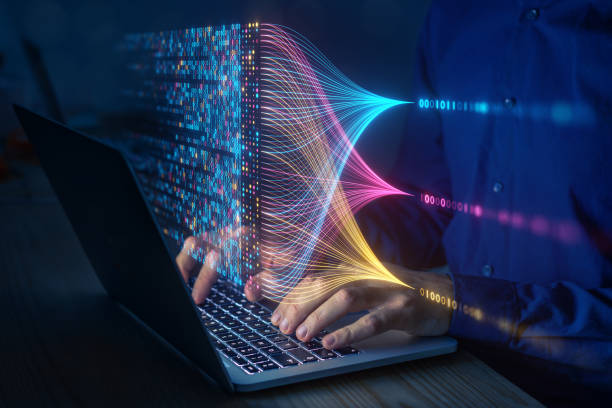AI Jobs in Japan – Roles, Skills, and Workplace Conditions for 2025
AI positions in Japan span data preparation, model testing, and system monitoring. Tasks are structured and follow clear schedules, allowing both local and international applicants to adapt effectively. Workplaces emphasize team collaboration and defined technical responsibilities.

Typical Duties in Dataset Labeling, Monitoring, and Evaluation Roles
AI development relies heavily on properly labeled, monitored, and evaluated data. In Japan’s AI sector, professionals working in these areas typically handle several key responsibilities. Data labelers meticulously categorize and tag information according to specific parameters, ensuring AI systems have properly structured training data. This work requires attention to detail and understanding of classification systems relevant to the AI’s purpose.
Monitoring specialists track AI system performance in real-time environments, documenting anomalies, errors, and unexpected behaviors. They typically maintain monitoring dashboards, generate regular performance reports, and coordinate with development teams when issues arise. Evaluation specialists assess AI systems against benchmarks, conducting comprehensive testing to measure accuracy, efficiency, and reliability. These professionals typically design evaluation criteria, execute testing protocols, and prepare detailed assessment reports that inform further development efforts.
Skills and Qualifications Employers Commonly Expect
Organizations in Japan’s AI sector generally seek candidates with specific technical and soft skills. For technical qualifications, proficiency in programming languages such as Python, R, or Java is typically expected, with Python being particularly valued for its widespread use in AI development. Knowledge of machine learning frameworks like TensorFlow, PyTorch, or Keras often appears in qualification requirements, along with understanding of statistical analysis and data manipulation techniques.
For more specialized roles, expertise in natural language processing, computer vision, or reinforcement learning may be expected. Japanese employers also typically value experience with cloud platforms like AWS, Google Cloud, or Microsoft Azure, where many AI systems are deployed. While not always mandatory, academic qualifications in computer science, data science, mathematics, or related fields are frequently preferred.
Regarding language skills, proficiency in Japanese is generally advantageous, though requirements vary by company. International firms or research institutions might prioritize English proficiency, while traditional Japanese companies often require business-level Japanese (JLPT N2 or higher). Beyond technical abilities, employers typically seek candidates with strong analytical thinking, problem-solving capabilities, attention to detail, and effective communication skills.
Guidance for International Applicants Adjusting to Workplace Standards
International professionals considering AI positions in Japan should prepare for distinct workplace norms that differ from Western environments. Japanese business culture generally emphasizes group harmony (wa) and hierarchical relationships. Decision-making typically follows a consensus-building approach called nemawashi, where stakeholders are consulted before formal proposals. This process may seem time-consuming to those accustomed to faster decision cycles.
Communication styles in Japanese workplaces tend to be more indirect than in Western countries, with emphasis on maintaining harmony and avoiding direct confrontation. International professionals should be mindful of non-verbal cues and implicit messages. Business etiquette, including proper greeting protocols, business card exchanges (meishi koukan), and after-work socializing (nomikai), remains important even in technology sectors like AI.
For integration success, international applicants should consider familiarizing themselves with basic Japanese phrases and cultural norms, even when working in predominantly English-speaking environments. Many companies offer cultural orientation programs, and connecting with other international professionals in similar roles can provide valuable insights into navigating the workplace effectively.
Information About Work Hours, Tools, and Collaborative Settings
The AI sector in Japan typically operates within the standard Japanese work structure but often with more flexibility than traditional industries. Work hours generally follow the 9:00 AM to 6:00 PM pattern, though technology companies increasingly offer flexible arrangements and remote work options, accelerated by recent workplace transformations. AI professionals usually work in collaborative environments, with teams comprising data scientists, engineers, researchers, and domain experts.
The technical infrastructure commonly includes workstations with high computing capabilities, often supplemented by access to cloud-based computing resources and GPU clusters for intensive AI tasks. Common software tools include Jupyter Notebook, VS Code, and specialized AI development environments, while collaboration is typically facilitated through platforms like Slack, Microsoft Teams, and project management systems such as Jira or Trello.
Research-oriented positions might involve regular publication activities and conference participation, while development roles generally adhere to agile methodologies with regular sprints and reviews. Many companies implement a hybrid approach, combining Japanese management philosophies with international best practices in technology development.
Steps for Sending an Application and Arranging Supporting Materials
The application process for AI positions in Japan typically follows a structured approach that combines traditional Japanese hiring practices with sector-specific requirements. When preparing applications, candidates should create both English and Japanese versions of their resume/CV if possible, with the Japanese version following the standard rirekisho format for local companies. Technical portfolios demonstrating previous AI projects, GitHub repositories, or research publications are highly valued and should be organized for easy review.
The typical application sequence begins with online submissions through company websites or professional platforms like LinkedIn or Daijob. Initial screenings often include technical assessments or coding challenges specific to AI skills, followed by multiple interview rounds focusing on both technical capabilities and cultural fit. For international applicants, documentation requirements typically include proof of educational qualifications (often requiring official translation), relevant certifications, and appropriate visa documentation.
When interviewing, candidates should be prepared to discuss their technical expertise in detail while demonstrating awareness of how their skills apply to Japanese business contexts. Following up appropriately after interviews reflects an understanding of Japanese business etiquette and can positively influence hiring decisions.
This informational overview provides context about AI career paths in Japan rather than specific job openings. Individuals interested in pursuing AI careers should conduct further research and contact potential employers directly for current opportunities.




